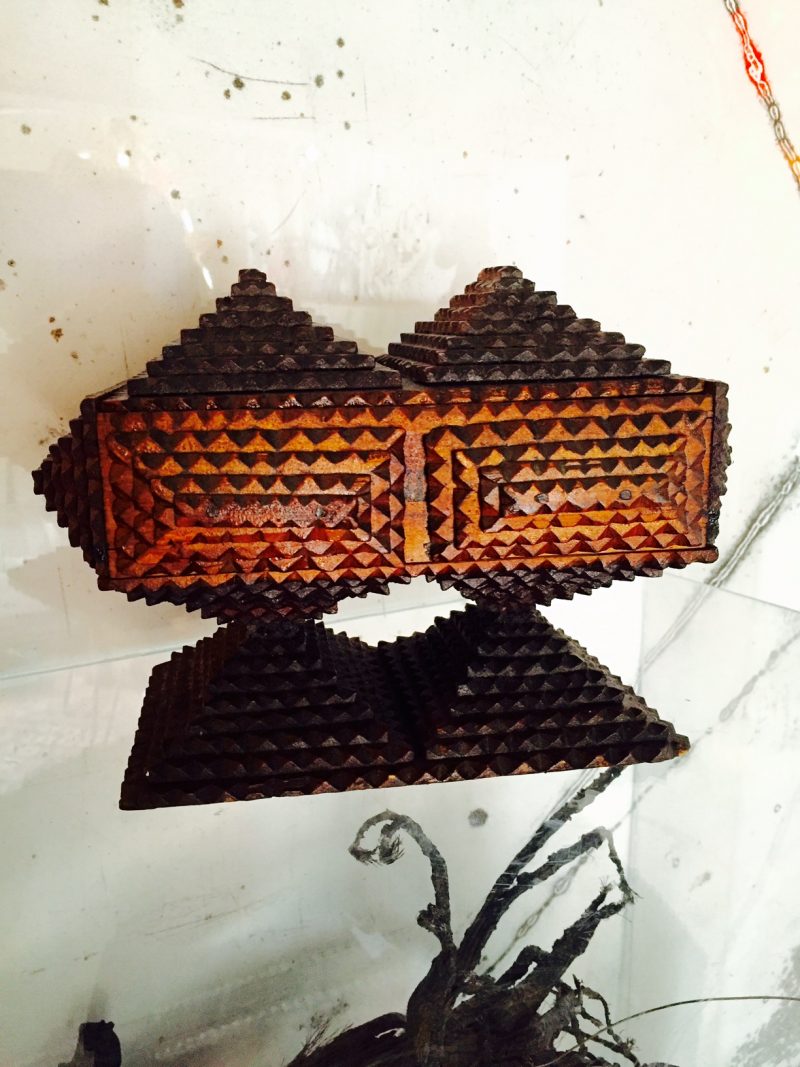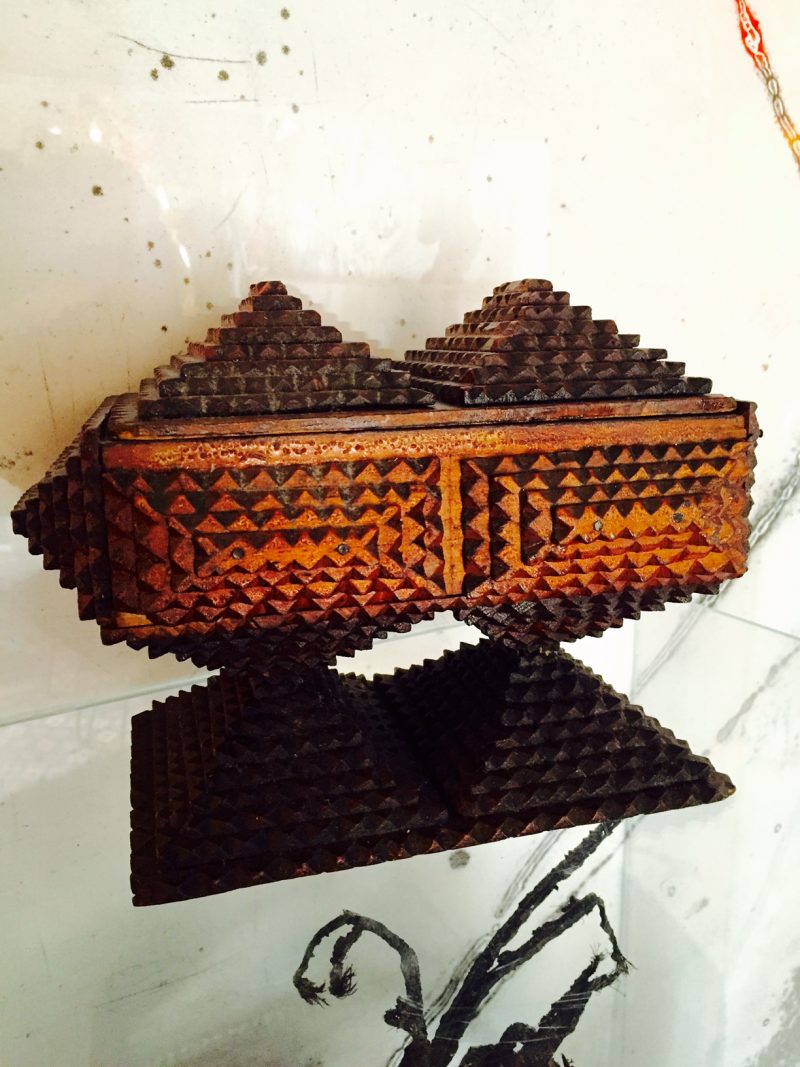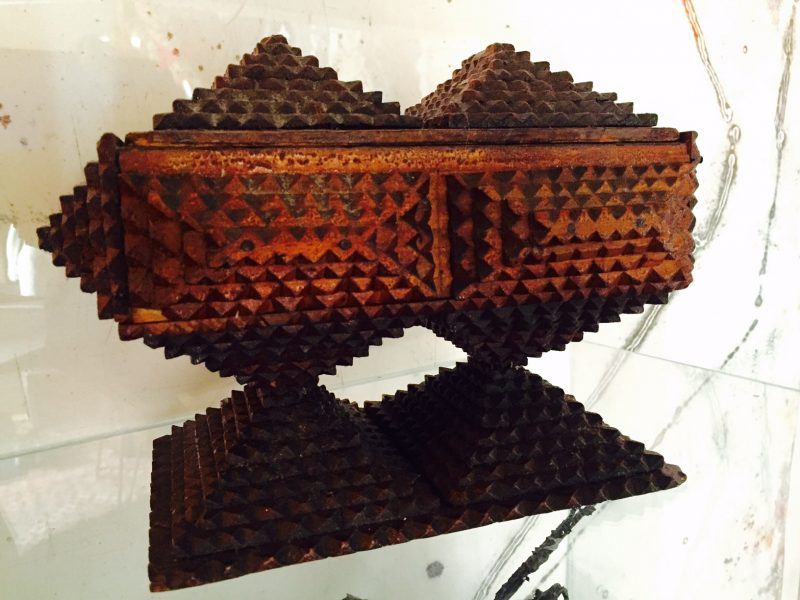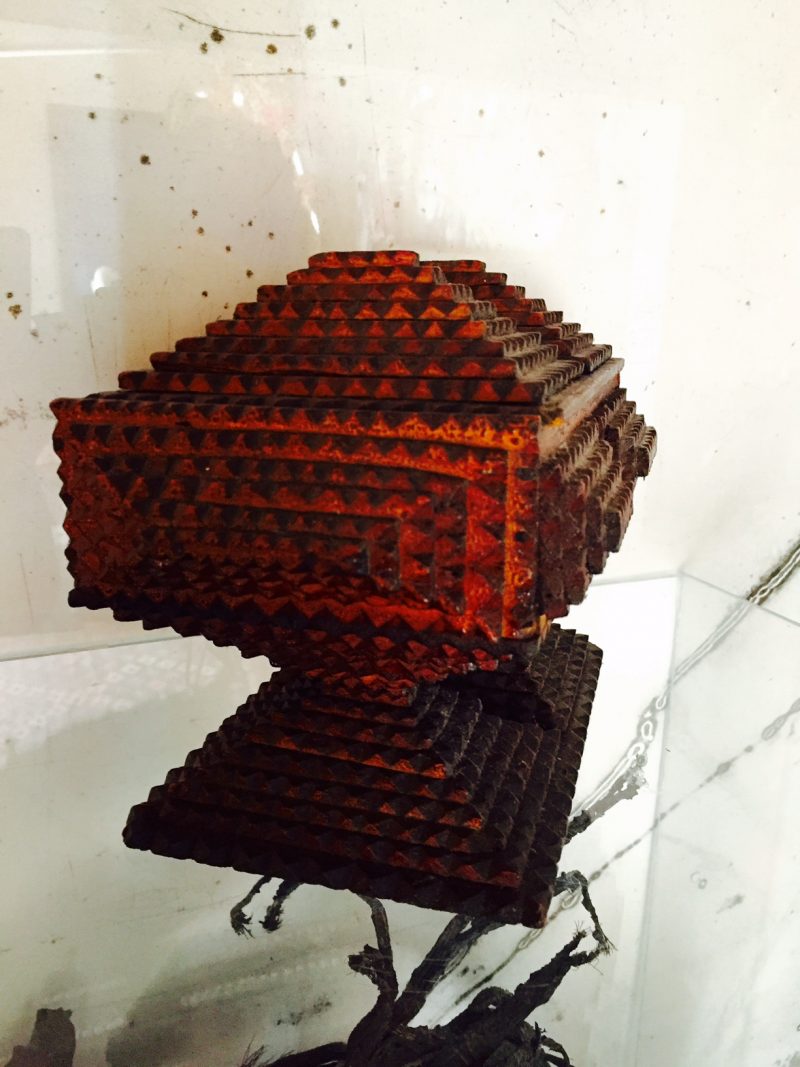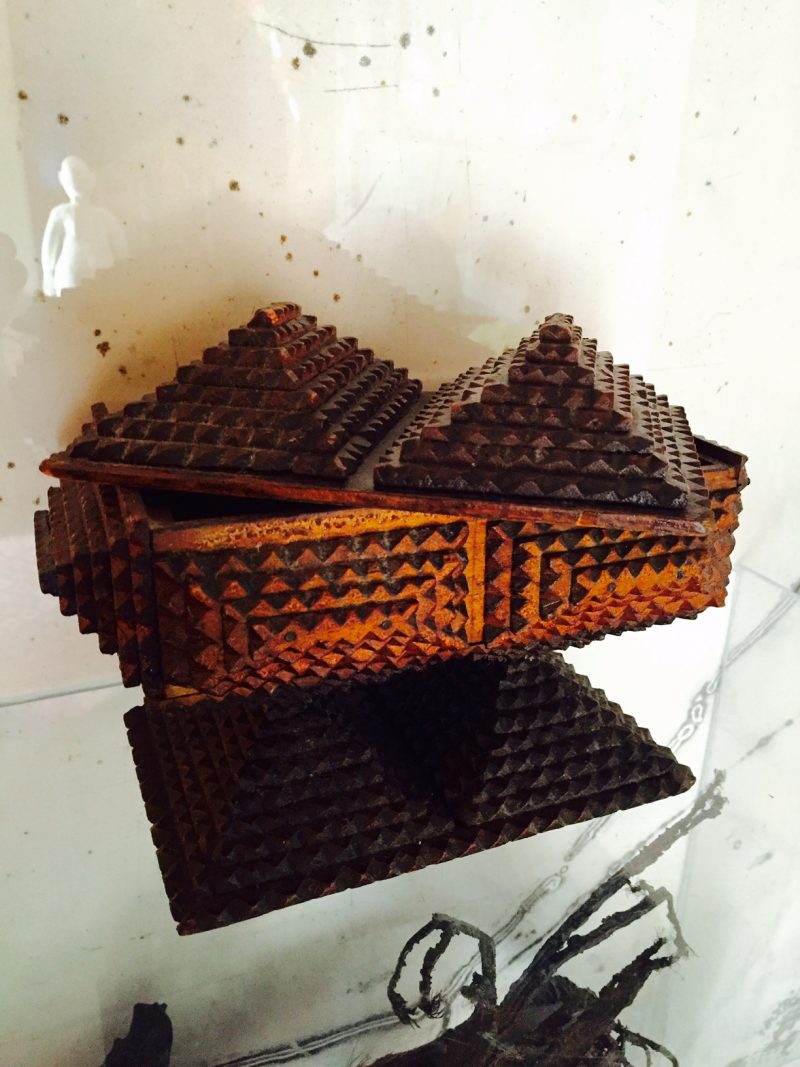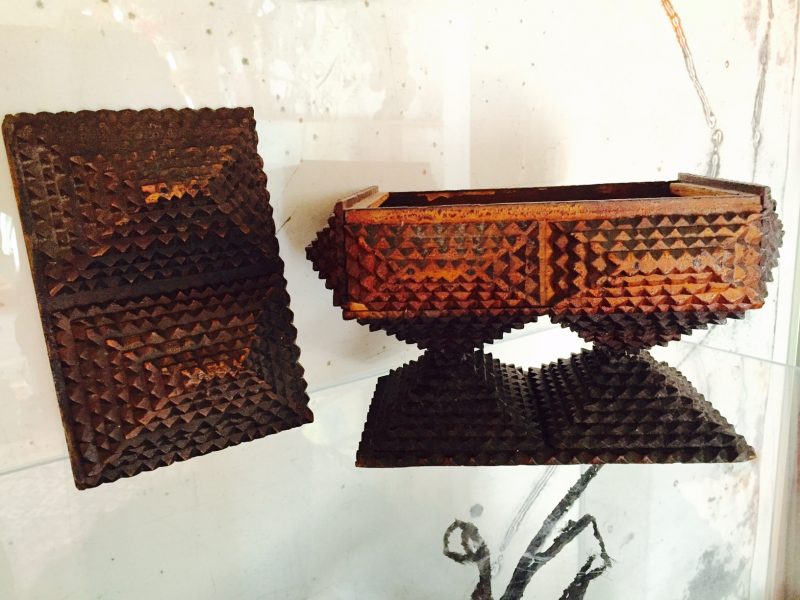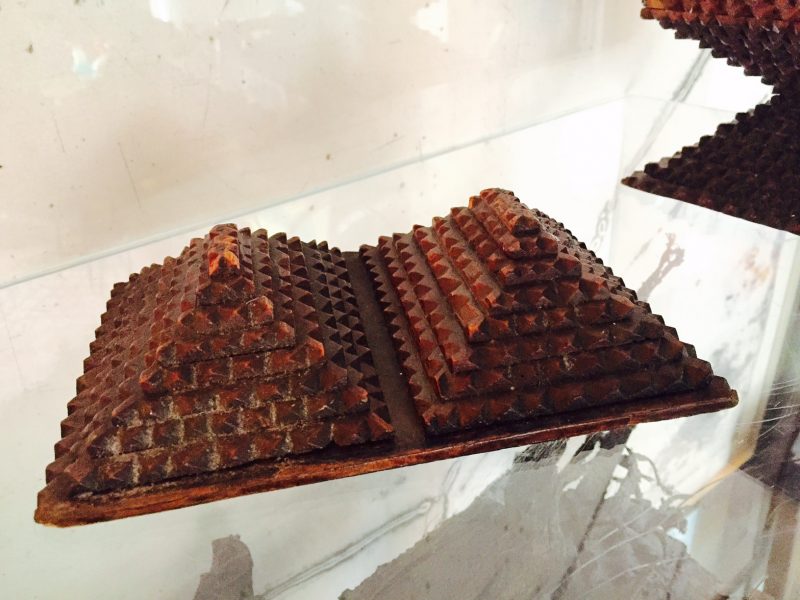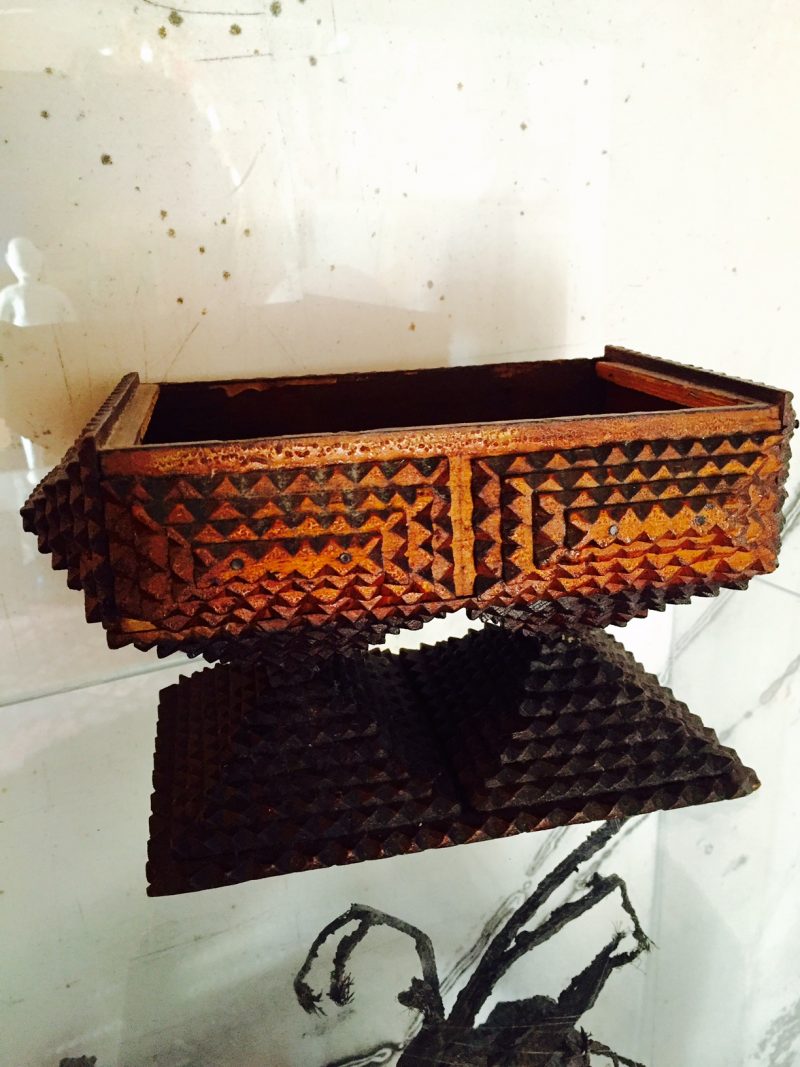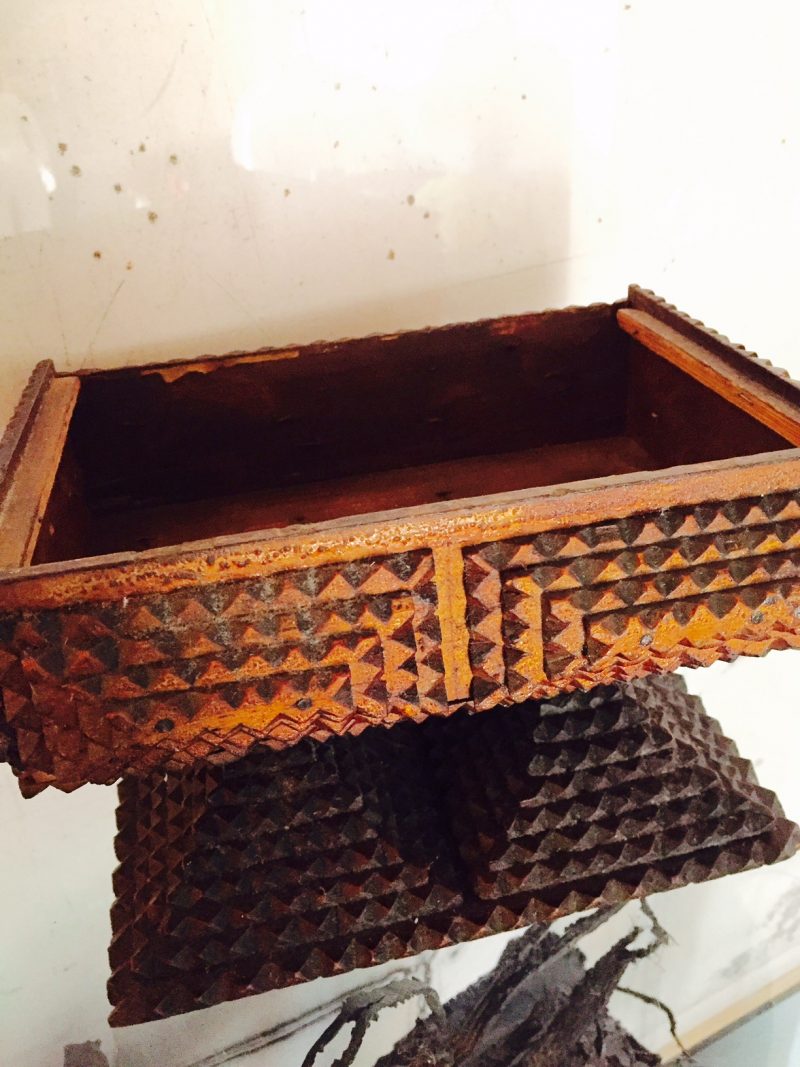Rare Tramp Art Jewellery Box
Impressive Deeply Layered Tramp Art Pyramidal, Double Pedestal Jewellery Box with Removable Matching Wood Lid. SOLD.
Measures 10 inches width x 7 inches depth x 7.25 inches height.
Interior measures 5 width x length x 2 inches deep. Rare, Valuable & Highly Collectible.
A fine Tramp Art deeply layered pedestal box. Exhibiting a superb sculptural presence, circa 1890s-1900.
Please research pricing of this specific item to understand pricing. Thanks.
History of Tramp Art
Introduction:
I have been buying, selling, and studying tramp art since the mid-1980s when I bought my first piece at a flea market in NYC. There was not much scholarship available in those days and it left me wondering what tramp art was all about. The only thing that was apparent to me was what it looked like. Each piece, although similar in construction, was a unique object. They were made of wood, layered, and notch carved but I yearned to know more; who the makers were and why they made the forms they did. I could not find answers that satisfied me so I began an odyssey to explore and document my research. The outcome was authoring three books on the subject and an enduring love for an art form made from simple materials and simple tools for all of us to enjoy and cherish.
What is Tramp Art?
Tramp art is an art movement found throughout the world where small pieces of wood, primarily from discarded cigar boxes and shipping crates, are whittled into layers of geometric patterns having the outside edges of each layer notch carved. The artists used simple tools such as a pocketknife to carve the recycled wood. It was popular in the years between the 1870s to the 1940s after which the art form started to decline. It was made in prodigious numbers. The most common forms were the box and the frame. Although there were no rules or patterns to lend commonality in the artists’ work there were objects made in every conceivable shape and size including full sized furniture and objects of whimsy.
History of Tramp Art: The Art of Layered Inspirations
We do not know much about tramp arts’ history from written records in the early years of its popularity (1870s – 1940s), because there were few if any reference of it as an art form. It was first mentioned in an article published in the Pennsylvania Folk Life Magazine written by Francis Lichten in 1959. She termed the material “Tramp Work.” Subsequently other articles began to appear in the 60s and 70s referring to the body of work as “Tramp Art.”
The presentation of the art form to the antique and art community revealed a quirky little seen body of work that began to be celebrated after a long dormant period. A museum show organized by the American Folk Art Museum in NYC and a book followed, Tramp Art an Itinerant’s Folk Art, by Helaine Fendelman, bringing more attention to tramp art.
Most of the early perceptions were created I believe because early scholars were at a loss to explain this unique art form. Early folk art scholarship believed that most pure folk art was made by the poor, displaced and unschooled artisan. Even today the study of folk art and Outsider Art celebrates the romantic myth of the folk artisan on the outside of convention and on the outside of society. It is the currency in how this art is marketed and packaged. With no written history on tramp art to source the early writers looked to establish tramp art’s boundaries by making assumptions without established scholarship. To define a segment of art based on a writer’s assumptions is problematic.
What our research uncovered after extensive examination of thousands of tramp art objects was that most of these early assumptions were inaccurate and poorly formed. As tramp art is continued to be studied more facts will be uncovered to more accurately describe the art form and place it in its proper historical perspective. Today there is a more accurate description of what tramp art is and who made these wonderful objects.
Who Were These Noble Notchers?
Tramp art was a democratic art form made around the world wherever the raw materials, (mostly cigar boxes and shipping crates), used in its construction were found. In the United States there were over 50 different ethnic groups documented making it. It appealed to men who might have made an important body of work such as ‘Sunflower’ artist John Zubersky or the wonderfully expressive wall pockets by John Zadzora but also to men who might have made one piece in their lifetime. It was easy to make and appealed to anyone who had a desire to take a pocketknife to wood.
We have uncovered hundreds of men, some women, and even children who made historical tramp art. Tramp art was mostly made in home based settings and by men who were factory workers, farmers, and labored in just about every conceivable occupation. There were tramps or hoboes who made the art form but not in the numbers the name suggests. The name tramp art was a contemporary invention and had nothing to do with the art form as a whole.
As I said tramp art is an important art movement maybe not yet comparable to other important art movements throughout our culture but it is a testament to the ability of the common man untrained in the arts to produce objects of immense artistic integrity. Their movement was one of the first to use discarded materials to make objects of art as well as utilitarian objects for everyday use.
